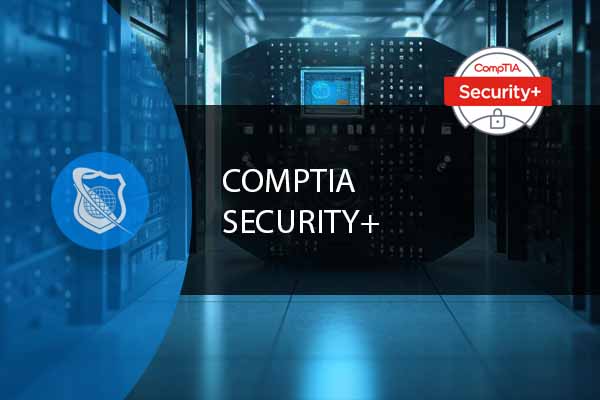Introduction
In today’s digital era, the importance of cybersecurity and implementing effective Security Awareness Training cannot be overstated. This extensive guide delves into the nuances of such training, aiming to fortify your organization against cyber threats through informed and vigilant employees.
The Imperative of Security Awareness
Understanding the Need
The human factor often poses the greatest risk in cybersecurity. Security Awareness Training aims to mitigate this by educating employees about cybersecurity best practices, thus transforming potential weak links into the first line of defense against cyber threats like phishing, malware, and data breaches.
The Dynamic Cyber Threat Landscape
With the evolution of digital technology, cyber threats also evolve, necessitating continual updates in cybersecurity awareness and practices. Understanding the latest trends in phishing prevention, ransomware attacks, and data protection is crucial for organizational safety.

Information Security Manager Career Path
Propel your career forward and be part of an essential member of any management team as an Information Security Manager. This advanced training series is designed specifically for those want to move up into a management position in the IT field.
Building a Robust Security Awareness Program
Key Components of an Effective Program
- Diverse Communication Tools: Incorporate a variety of communication methods such as e-learning, interactive seminars, cybersecurity newsletters, and engaging digital content. This approach caters to different learning preferences and reinforces the message across various platforms.
- Continuous Learning and Adaptation: Cybersecurity is a dynamic field. Regularly update your training modules to reflect the latest cyber threat awareness and countermeasures. This includes updates on new phishing tactics, secure password practices, and handling sensitive data.
- Engagement and Incentivization: Utilize gamification techniques and incentives to maintain employee engagement. Interactive quizzes, cyber safety games, and rewards for cybersecurity champions can create a more engaging learning environment.
- Clear Objectives and Goals: Start by defining clear objectives and goals for your security awareness program. Understand what you want to achieve, such as reducing the number of security incidents, increasing employee awareness, or improving incident response times. Having well-defined goals will help you measure the program’s success.
- Risk-Based Training: Tailor your training content based on the specific risks your organization faces. Identify the most common threats and vulnerabilities relevant to your industry and organization, and focus your training efforts on addressing these areas. This ensures that your program is aligned with the real risks your employees encounter.
- Regular Phishing Simulations: Conduct regular phishing simulations to test employees’ ability to recognize and respond to phishing emails. Provide immediate feedback and educational resources to those who fall for simulated phishing attacks. This hands-on approach reinforces the importance of vigilance and helps employees recognize actual threats.
- Executive Support and Involvement: Gain support and involvement from senior leadership. When executives actively participate in security awareness initiatives, it sends a strong message to employees about the importance of cybersecurity. Encourage leaders to lead by example when it comes to security practices.
- Customized Content: Tailor your training content to different employee roles and responsibilities. What a finance team member needs to know about cybersecurity may differ from what an IT administrator requires. Customizing content ensures that employees receive relevant information that directly relates to their job functions.
- Feedback and Surveys: Collect feedback from employees through surveys and feedback mechanisms. This will help you gauge the effectiveness of your program and identify areas for improvement. Make adjustments based on employee input to keep the program engaging and relevant.
- Multi-Lingual Support: If your organization has a diverse workforce with employees who speak different languages, provide training materials in multiple languages to ensure everyone can access and understand the content effectively.
- Incident Reporting Mechanisms: Establish clear and easy-to-use incident reporting mechanisms. Encourage employees to report any security incidents or suspicious activities promptly. Ensure that reports are treated confidentially and that employees feel safe reporting without fear of reprisal.
- Cybersecurity Resources: Create a centralized repository of cybersecurity resources, such as instructional videos, guides, and reference materials. This allows employees to access additional information when needed and fosters a culture of continuous learning.
- Measurable Metrics: Define key performance indicators (KPIs) to track the program’s effectiveness. Monitor metrics such as the reduction in security incidents, the number of reported incidents, and the percentage of employees completing training modules. Regularly review these metrics to assess the program’s impact.
- Collaboration with IT and Security Teams: Collaborate closely with IT and security teams to ensure that security awareness initiatives align with broader cybersecurity strategies. This collaboration can help identify emerging threats and adapt training content accordingly.
- Regular Updates and Reinforcement: Cybersecurity is an ongoing effort. Continuously update and reinforce your training content to reflect evolving threats and best practices. Consider hosting periodic refreshers or targeted training sessions for high-risk areas.
- By incorporating these additional components into your security awareness program, you can create a comprehensive and effective strategy to mitigate security risks and empower your employees to be active participants in your organization’s cybersecurity efforts.
Secure Your Networks and Prevent Password Breaches
Our robust CompTIA Sec+ course is the perfect resouce to ensure your company’s most valuable assets are safe. Up your security skills with this comprehensive course at an exceptional price.
Customizing Training to Fit Organizational Needs
- Role-Specific Training Modules: Tailor cybersecurity training to the specific needs of different roles within the organization. For instance, IT staff may require advanced training on network security, whereas other employees may benefit from more general digital safety training.
- Industry-Relevant Content: Adapt the training content to address the specific risks and regulations of your industry. A financial institution, for example, would focus on secure transaction practices and regulatory compliance, whereas a healthcare provider would emphasize patient data protection.
Cost Effective Training Methods
- Interactive Workshops and Webinars: Conduct regular, live training sessions to discuss current cybersecurity trends, answer questions, and engage employees in real-time scenarios.
- E-Learning Platforms: Develop an online learning portal where employees can access training material, take part in cybersecurity quizzes, and track their learning progress.
- Feedback Mechanisms: Implement feedback channels to gather employee insights about the training. This feedback is crucial for refining the program and ensuring it remains relevant and effective.
Measuring and Enhancing Training Effectiveness
Regularly assess the effectiveness of your training program through surveys, simulated cyber attacks, and monitoring the frequency of security incidents. Continuously refine the program based on this feedback and evolving cyber threats.
To ensure the ongoing success of your security awareness program, it’s crucial to establish a robust system for measuring and enhancing its effectiveness. Here are key steps to achieve this:
- Surveys and Feedback Mechanisms: Implement regular surveys and feedback mechanisms to gather insights from your employees. These tools provide a valuable means of understanding how well your training resonates with your workforce. Seek feedback on training content, delivery methods, and overall satisfaction to identify areas for improvement.
- Simulated Cyber Attacks: Conduct periodic simulated cyber attacks, such as phishing exercises and social engineering tests. These simulations allow you to evaluate employees’ response to real-world scenarios and assess their ability to detect and mitigate threats. Use the results to tailor future training and focus on specific areas where improvement is needed.
- Monitoring Security Incidents: Keep a vigilant eye on the frequency and nature of security incidents within your organization. An effective training program should lead to a noticeable decrease in security incidents over time. Track incidents and analyze their root causes to identify any patterns or weaknesses that need to be addressed through training updates.
- Key Performance Indicators (KPIs): Define and track KPIs that are directly linked to your training objectives. These may include metrics like the reduction in successful phishing attacks, the time it takes to report security incidents, or the percentage of employees completing training modules. Consistently monitoring these KPIs allows you to measure progress and make data-driven decisions.
- Evolving Cyber Threat Landscape: Stay informed about the ever-changing cyber threat landscape. Regularly update your training content to reflect the latest threats, attack techniques, and best practices. Ensure that your employees are equipped with the most up-to-date knowledge to effectively defend against emerging threats.
- Customized Training Paths: Analyze the data and feedback collected to create customized training paths for different employee groups. Tailor training content and resources to address specific weaknesses or areas of concern within various departments or job roles.
- Executive and Leadership Support: Engage with senior leadership to secure their ongoing support for the program. Regularly communicate the program’s progress and impact to executives to maintain their commitment. Their endorsement can significantly influence the organization’s overall security culture.
- Continuous Improvement: Embrace a culture of continuous improvement. Use the insights gained from surveys, simulations, and incident analysis to refine your training program iteratively. Regularly update content, delivery methods, and assessment techniques to ensure that the program remains effective in mitigating risks.
By consistently assessing, refining, and evolving your security awareness training program based on real-time feedback and the ever-evolving threat landscape, you can create a dynamic and adaptive approach to cybersecurity education that strengthens your organization’s defenses against cyber threats.

Lock In Our Lowest Price Ever For Only $14.99 Monthly Access
Your career in information technology last for years. Technology changes rapidly. An ITU Online IT Training subscription offers you flexible and affordable IT training. With our IT training at your fingertips, your career opportunities are never ending as you grow your skills.
Plus, start today and get 10 free days with no obligation.
Conclusion
Effective Security Awareness Training is essential in building a resilient organization capable of confronting various cyber threats. By educating and empowering employees, organizations can significantly reduce the risk of digital security breaches.
Frequently Asked Questions About Security Awareness Training
What is the importance of a security awareness program for an organization?
A security awareness program is crucial for organizations as it educates employees about cybersecurity risks, helps them recognize and respond to threats, and promotes a culture of security. It reduces the likelihood of security incidents and data breaches by empowering employees to protect sensitive information and assets.
How often should security awareness training be conducted?
The frequency of security awareness training can vary based on factors such as industry regulations, the evolving threat landscape, and the organization’s risk profile. Generally, training should be conducted regularly, with periodic refresher courses and updates to address emerging threats. Quarterly or annually is a common practice.
What are some effective methods for promoting employee engagement in security awareness training?
To promote engagement, utilize interactive methods such as gamification, interactive seminars, and cybersecurity quizzes. Incentives, recognition, and rewards for cybersecurity champions can also motivate employees to actively participate in training. Additionally, making the training content relevant to employees’ daily tasks and responsibilities enhances engagement.
How can an organization measure the effectiveness of its security awareness program?
Measuring effectiveness involves tracking key performance indicators (KPIs) such as the reduction in security incidents, employee feedback from surveys, and the success rate in simulated cyber attack exercises. Monitoring changes in behavior, incident reporting rates, and the ability to detect and respond to threats are also important metrics.
What should be included in ongoing training to address evolving cyber threats?
Ongoing training should cover the latest cyber threats, attack techniques, and best practices. This includes updates on new phishing tactics, secure password practices, handling sensitive data, and emerging technologies or threats relevant to the organization’s industry. Regularly updating training content is essential to stay ahead of evolving threats.

























